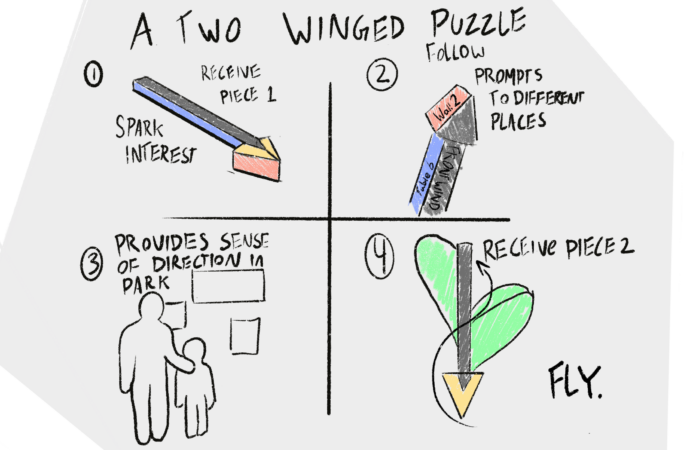Two Winged Puzzle is a concept meant to provide an optional structure and goals to the exploratory environment of a museum or national park. Some museum goers struggle to pick a direction with the options given to them. Others do not seem to connect with the material at the museum through exhibits alone. Two Winged Puzzle works by starting with intrigue to guide the visitor to a reward. At the start of the exhibit, a visitor is given part of puzzle, a stem. This stem is marked with each important milestone in the exhibit on each side, allowing it to serve as a guide of sorts. At the end of the exhibit, the visitor gets the second portion of the puzzle, completing it and turning it into a flying toy. The sustainability of this works mostly through value. The visitor has a reason to hold onto the stem throughout the exhibit to get the second piece, when they do it feels like a reward they worked for, giving it more value. This feeling of reward should highlight the feeling of seeing the toy fly the first time, to better connect the visitor to the story of the Wright Brothers inspiration.
Takeaways
Positive: this works with the visitor experience, not just as an object, they can feel some sort of ownership for having earned it. It also gives the option for curators to help guide visitors using the icons on the toy itself. Has many options for iterations on form, or to support branding.
Negative: these are still individual consumables. Having them in two pieces may cause impatient visitors to never see the toy in action. The guide icon system would likely increase manufacturing costs.




